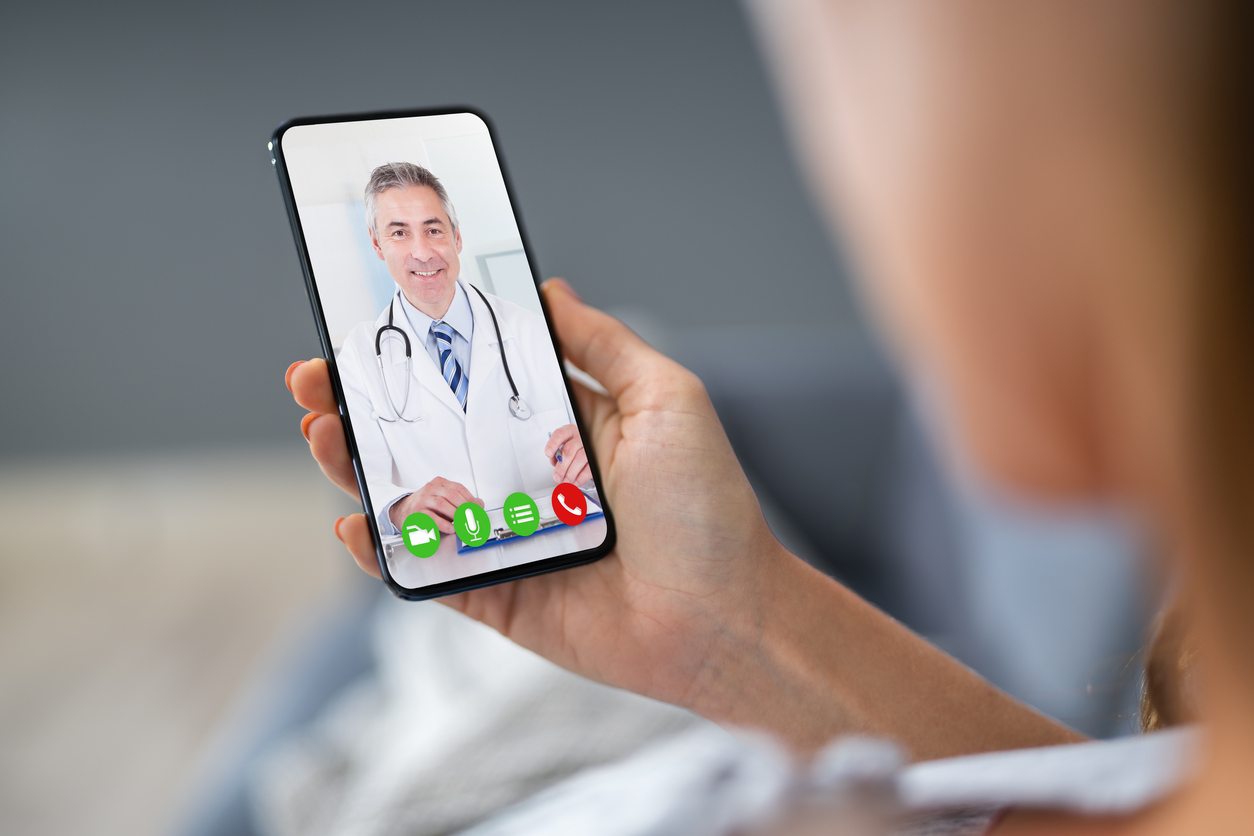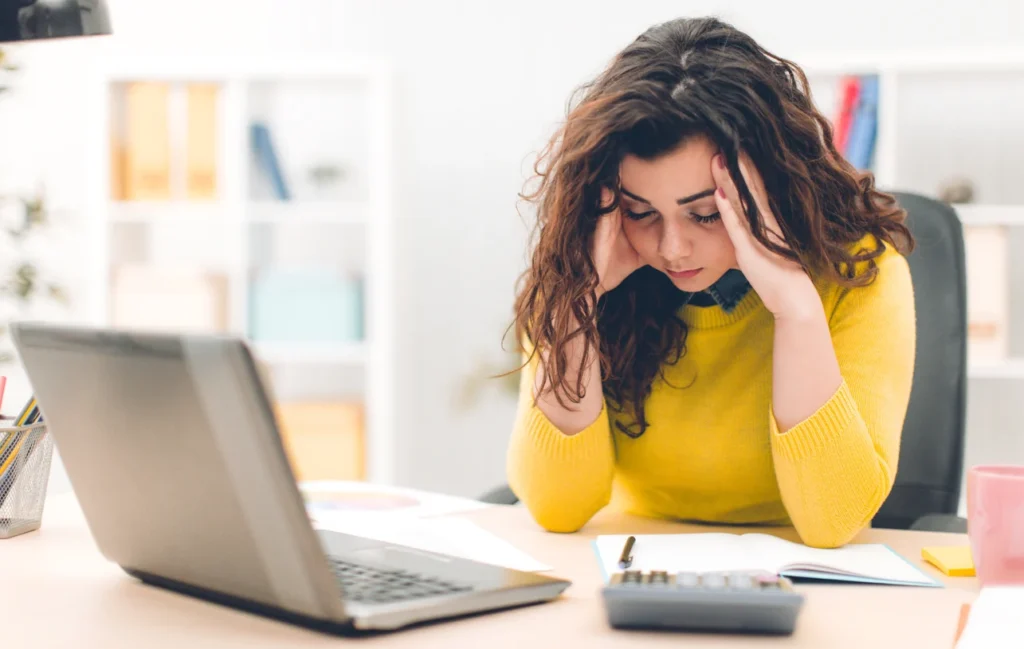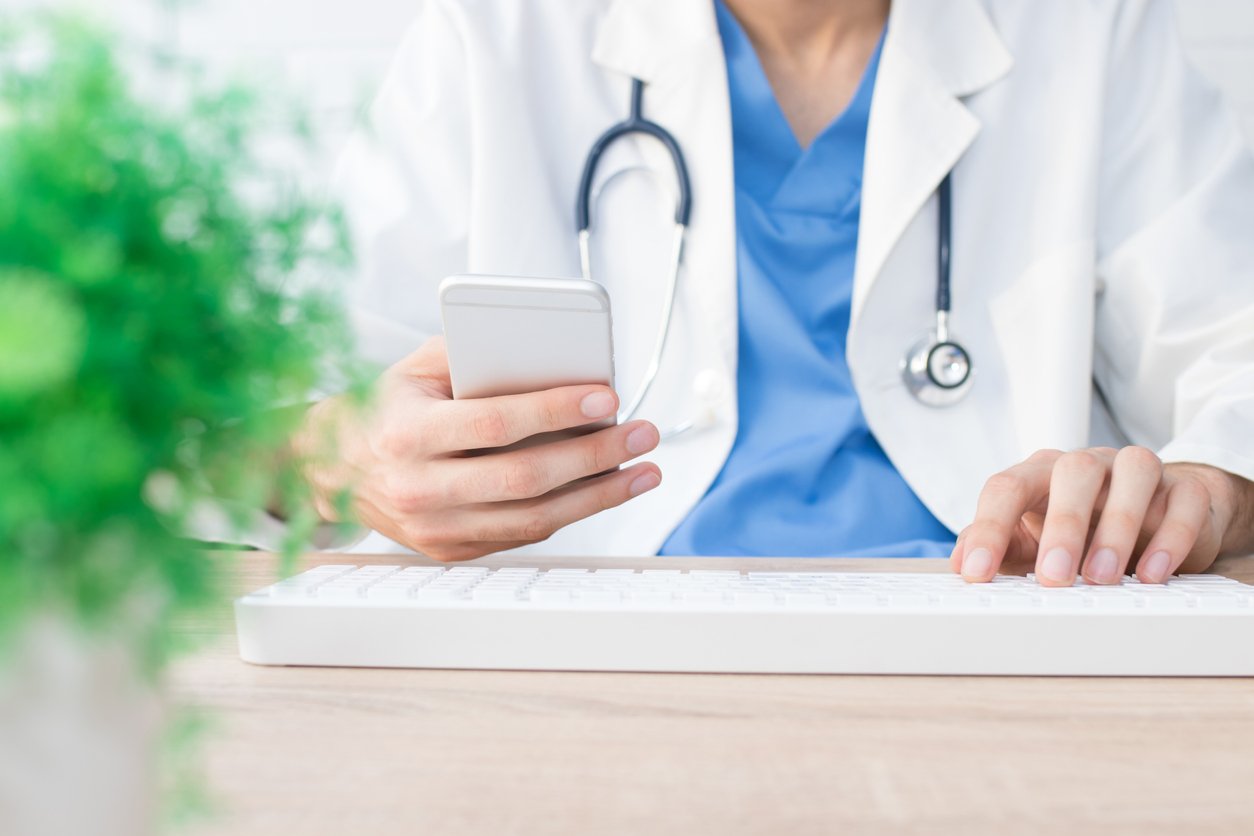Telemedicine Software – Tips On Choosing The Right Provider

6 Feb 2023
It’s no secret that the medical industry is constantly changing.
Medicine is undergoing transformation, propelled by advancing technology. The way medical professionals arrange appointments is shifting from traditional approaches to a more modern, digital method.
And what about interactions with patients? After all, some patients are unable to see a medical professional on a regular basis for one reason or another. At the very least, it ends up being difficult.
That’s where telemedicine software comes in.
Now, as someone in the medical industry, it’s likely you’ve heard of telemedicine. Maybe you’ve even begun to implement it into your practice.
However, for those who aren’t fully aware of what telemedicine is, but are intrigued by the concept, it’s important to go over the benefits of telemedicine and how to properly select a telemedicine provider.
What is Telemedicine Software?
Telemedicine is defined as the remote treatment and diagnosis of patients using telecommunications technology.
By extension, “telemedicine software” is the platform used by medical professionals in order to connect with these patients remotely.
Telemedicine is part of the more broad health information technology umbrella. This umbrella encompasses all sorts of technology related to analyzing and sharing health information.
Benefits of Telemedicine Software
Now that you know what constitutes telemedicine software, let’s dive into the different benefits associated with implementing it into your practice.
It seems that telemedicine is already being viewed in a positive light, considering that the industry has grown by over 44% in the past 5 years preceding COVID-19.
While there are numerous benefits, we’ll be listing some of the more prominent ones. It’s also worth noting that in order to reap the rewards of implementing telemedicine software, you’ll have to go with an effective provider. Which is something we’ll get into a little later.
Accessibility and Convenience

Improved accessibility and convenience for patients is the name of the game when it comes to telemedicine software. And in our incredibly impatient society, this aspect simply cannot be ignored.
Telemedicine software greatly benefits people who fall into a few different categories:
- Those who are disabled or greatly ill to the point where travel of any kind would be difficult
- Those who reside in more remote areas and travel would be inconvenient or costly
- Those who simply cannot get time off work in order to attend an appointment
While there are certainly more scenarios where telemedicine software would greatly benefit the public, these are the most common situations that make implementing telemedicine software worthwhile.
Improved Patient Care Quality
Quality patient care begins with patients having their medical concerns addressed in a timely manner, and that’s exactly what telemedicine software provides.
It’s become obvious that wait times for patients have been getting longer and longer. In fact, simply looking at the average wait times for hospitals in the US can really drive that point home.
| US State | Average Hospital Wait Time |
| Washington, D.C. | 286 mins |
| Delaware | 153 mins |
| New York | 153 mins |
| Maryland | 152 mins |
| Connecticut | 152 mins |
Instead of enduring long, often indefinite wait times, patients can get access to diagnosis and treatment options quicker than ever. They’ll be thankful you chose to value their time.
Patients can also rest assured knowing that it’s far easier for them to reach a medical professional with any concerns they might have or warning signs they need to report.
Increased Efficiency

Since telemedicine software can largely reduce full waiting rooms, it only makes sense that a medical practice’s efficiency would increase. Staff will be less burdened with the stress of managing a full waiting room.
If an effective telemedicine solution is chosen and used properly, practices could begin seeing more patients than ever before. Which is nearly every medical practice’s dream.
Added Flexibility
Telemedicine software allows both patients and medical professionals to meet from virtually anywhere. This benefit means that practices can ease up with their restrictive hours of operation if they wish.
Given that many people have full-time jobs that eat up much of their availability, providing a little extra flexibility with telemedicine software can go a long way towards improving patient relationships.
Reduced No-Shows
This one’s a given. Telemedicine software is essentially designed to be convenient for patients who would otherwise have difficulty with travel to and from a medical appointment. Without telemedicine software, patients will often cancel last-minute, or even worse: simply not show up.
It’s also a no-brainer that no-shows in the medical industry are incredibly detrimental financially. In fact, one study puts the estimated losses in the US alone from no-shows at around $150 billion a year. This astronomically high number should be enough to convince anyone that measures need to be taken against appointment no-shows, and telemedicine software implementation is a great start.
Choosing the Right Telemedicine Software Provider

So now you’re on-board with the benefits of telemedicine software and ready to implement it. Great! Welcome to the future of medical appointments.
However, there’s just one little problem.
You have no idea which provider to go with.
And who could blame you? A simple Google search shows a multitude of different options to choose from. Some of which may have already tried to solicit you with emails.
Thankfully, we’re here with some information that should get you on track with choosing the correct telemedicine software provider for your practice.
Key Telemedicine Software Features
Let’s start with some of the core features you’re going to want in a telemedicine software solution.
Obviously, these aren’t the be-all-end-all of features. They’re just the must-haves to make your implementation of telemedicine software as smooth and beneficial as it can be.
1. Audio and Video Conferencing
If you’re participating in a virtual meeting, the ability to use audio and video conferencing is definitely a must.
Audio and video conferencing allows medical professionals and patients to use a wired or wireless internet connection in order to communicate in a highly personalized fashion. Not only are medical professionals able to interpret how a patient is feeling by the way they look, but they’ll also be able to detect nuances in a patient’s voice. These key factors can help the professional with their overall assessment.
It also helps patients to describe how they’re feeling a little easier since they won’t have to try and use text chat to get their point across.
2. Instant Messaging/Chat
Instant messaging allows professionals to communicate with patients either before, during, or after an appointment with ease.
While not as personal as audio and video conferencing, it’s still a highly beneficial feature to have. Sometimes it can be difficult to explain something without having the patient actually read it, or it can be simply beneficial to have a paper trail of what was said during a virtual appointment.
Either way, instant messaging or live chat is a feature you’ll want in your telemedicine software.
3. Virtual Prescriptions

This allows telemedicine software the capability to create and send prescriptions straight to any pharmacy of the patient’s choosing.
Virtual prescriptions are highly convenient for patients, considering how easily those slips of paper can be lost. They can simply go to the pharmacy where the prescription was sent and pick it up. No problem at all.
4. Clinic Documentation
An effective telemedicine software will come with the ability to document certain important information pertaining to the patient and the virtual visit in question.
This information includes:
- Clinical tests
- Trials
- Treatments
Instead of recording this information using an old fashioned pen and paper method, telemedicine software will automatically record this information and store it securely. This can remove much of the stress of having to accurately and securely record clinical documentation.
5. Virtual Queue Management
Queue management is incredibly important regardless of what industry you’re in, and the medical industry certainly doesn’t break that trend.
The telemedicine software you choose should have some sort of virtual queue management system in place. It should be a simple process for patients to join the queue, otherwise, the convenience factor is thrown out the window.
6. Appointment Reminders
Even virtual appointments can be missed or forgotten about.
Choosing a telemedicine software that offers a reminder option can help this situation. Before the appointment, the patient is sent a reminder, usually through text or email, that their appointment is coming up.
Keep those no-show rates down by using appointment reminders.
7. Payment/Billing
Telemedicine software should have an online payment option in order to be as convenient as possible for patients. It doesn’t get more simple than that.
After the appointment is over, you simply send the request for payment to them, should there be a fee associated with the appointment. This feature can also save a lot of the trouble associated with having to integrate telemedicine software with your current billing option as well. Just something else to think about.
8. Reporting and Analytics
Reporting and analytics features within telemedicine software can give you extra insight into your medical practice, including:
- Staff performance
- Patient appointment history
- Patient demographics
This type of actionable data can help you determine what processes you have that work well, and what aspects of your practice that might need a little improvement.
9. Patient Feedback
An easy way to determine what needs improvement within your medical practice is to ask your patients directly. Thankfully, telemedicine software allows you to do that.
With proper telemedicine software, you’ll be able to send surveys to your patients in order to gather their feedback. You can ask them what they enjoy about your virtual appointments, and what might need to be fixed.
10. HIPAA Compliance
HIPAA is an acronym for the Health Insurance Portability and Accountability Act, which are essentially the regulations that protect sensitive patient information.
This is where telemedicine software sets itself apart from basic free video conferencing software.
When telemedicine software is HIPAA compliant, that means the software implements data security features that help to ensure your patient data is safe and secure. Without HIPAA compliance, your patient data runs the risk of being breached or stolen.
This data would include:
- Appointment history
- Appointment details
- Prescriptions
- Clinical tests
- Any messaging history on the software
HIPAA compliance is easily one of the most important factors that should go into your decision.
11. Medical Software Integration
Depending on your practice’s specific needs and current software usage, it’s important to look into integrations when assessing telemedicine software.
While not a complete necessity, integration can make your life a little easier. It can save you time and increase efficiency if you aren’t constantly having to switch between different programs before, during, or after a virtual appointment. Integrations can help keep your stress levels lower and in turn, help you serve patients more efficiently.
Telemedicine Software Costs
Price is a huge consideration when making any purchase, and telemedicine software is no different.
One thing to keep in mind is that there are a few different pricing models associated with telemedicine software.
Fixed Pricing
This model essentially means that you’re paying one price for one set of features with not much else to consider. This model is incredibly simple but it also lacks flexibility. If there are features you don’t really need, you’re still paying for them regardless.
Tiered Pricing
Tiered pricing leaves you with a little more to consider, but also gives you more flexibility with what you pay for.
Different tiers of service offer different features. The more you pay, the more you get.
For example, Skiplino Virtual Queue offers 2 separate service tiers to choose from. Not only that, but you can also save money by choosing to pay for the year upfront. Definitely a win.

When considering the higher price tag on telemedicine software, it’s important to remember the potential ROI. It’s easy to look at telemedicine software and be turned off by the costs. However, we’ve discussed numerous benefits associated with telemedicine software and it’s safe to say that it’s completely worth it. The trick is to make sure that the specific software you’re choosing offers features that make it worth the price tag.
Telemedicine FAQ’s
“Is there any difference between telemedicine and telehealth?”
While these terms are often used interchangeably, technically telemedicine is one part of the larger umbrella that is telehealth. There are certain aspects of telehealth that don’t fall into telemedicine.
“Are in-person visits necessary before virtual visits can begin?”
That depends on where you’re located. Certain areas require an in-person visit beforehand while others currently have no restrictions. You’ll have to research your area in order to figure this one out.
“Is telemedicine software easy to use?”
This depends on the software you choose. Ease of use should definitely be taken into consideration when choosing telemedicine software. If you go with a clunky, unintuitive provider, it’ll be difficult for both you and your patients to adjust.
For the most part, they’re designed to be easy to implement and use.
“How does the visit quality differ from that of an in-person visit?”
There is actually plenty of data to suggest that the quality of a telemedicine software appointment is just as good, if not better than an in-person visit. For example, this study in Massachusetts found that 62% believed it was on par, while an additional 21% found it to be of even better quality.
Telemedicine Software Summary

So we’ve now explained exactly what telemedicine software is, how it can benefit medical professionals, and even how to select the best provider for your needs.
All that’s left is for you to make the leap and implement the software yourself.
| Traditional In-Person Appointments | Telemedicine Software |
| Can be difficult for patients living in remote areas or those who have trouble leaving the house | Eliminates the need for travel |
| Crowded waiting rooms are inefficient and stressful on patients | No more waiting rooms |
| No additional functionality | Allows for additional functionality, such as automatic e-prescriptions |
It shouldn’t be a difficult decision. The data is there. Patients are jumping at the chance to avoid unnecessary commutes to appointments and long waits in uncomfortable waiting rooms. They’re also going to appreciate having a medical professional essentially at their fingertips, ready to address their concerns in a timely fashion.
And while we’re fully aware that making the jump from traditional appointment methods to virtual ones can be tough on both you and your patients, choosing the best possible telemedicine solution can help remedy these concerns. An easy to use, clear and concise software goes a long way towards a seamless transition from old ways to new.
So what are you waiting for? Join the future of medical appointments and get yourself some telemedicine software.
Still Confused About Telemedicine Software?
Telemedicine software can be complicated. There’s no doubt about that. Even armed with all this information, we won’t hold you at fault if you’ve still got some questions that need to be answered.
So if you’re left feeling a little dumbfounded, why not reach out to us? We’re always here to help you in whatever way you need it.
Latest



Similar Reads


All Rights Reserved @2026 Skiplino Technologies WLL.




